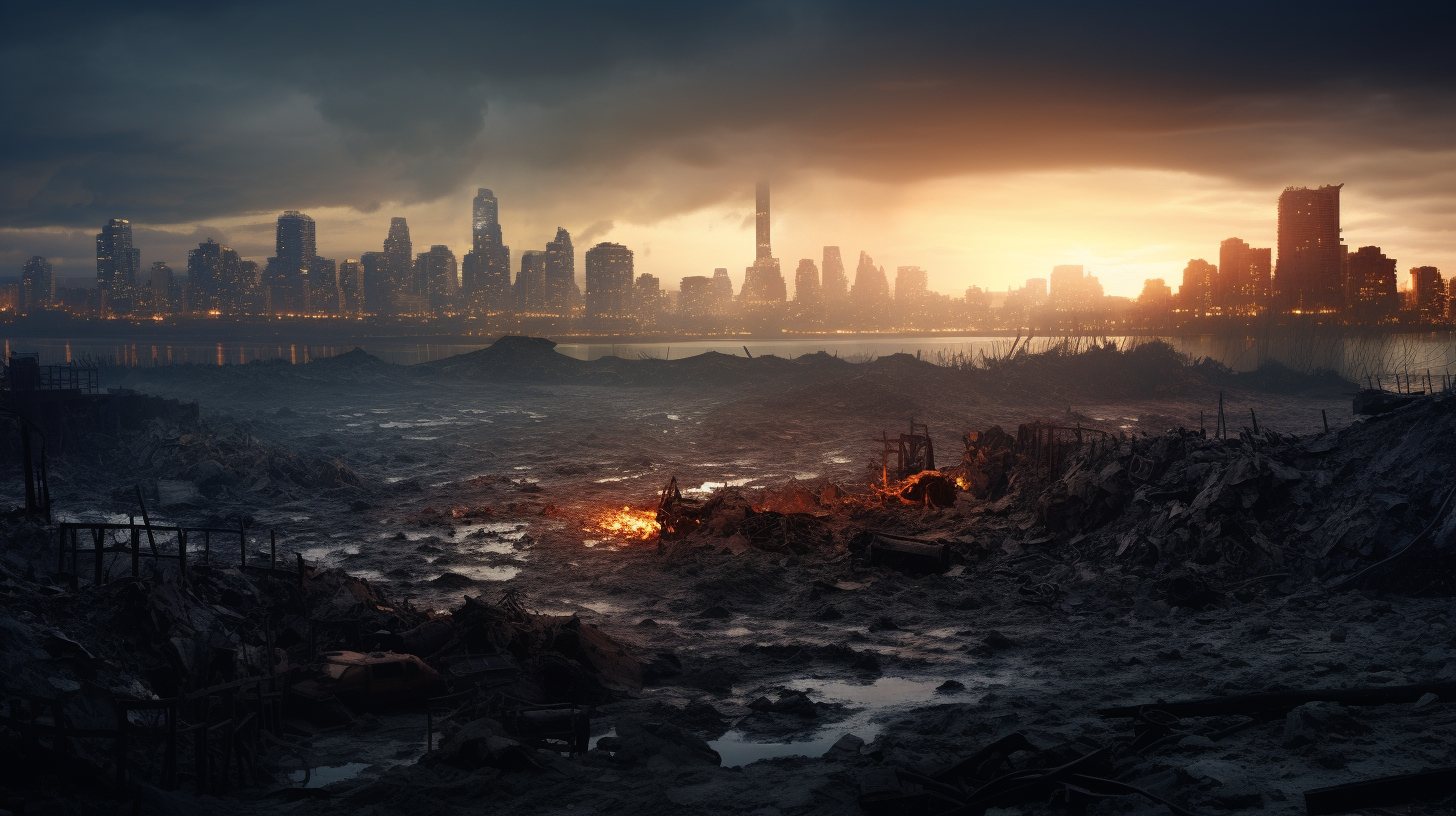In a world shadowed by the towering relics of our ambition, the majestic skylines that once stood as symbols of human progress now loom over the remnants of a society choking on its own excess. As the sea levels rise and natural light fades beneath the perpetual smog, what was beyond the horizon has now clenched the cities in its wrathful grip. Our horizons have shifted; no longer do they represent the future’s promise but a foreboding boundary between survival and suffocation.
Where the Air Touches the Heavens, buildings that pierced the clouds now trap the acrid fumes of desperation. The skyline, an ever-present reminder of a world gasping for breath, offers no solace, no whisper of escape. It outlines a bristling, jagged edge against the dreary sky – not just an architectural phenomenon but a testament to the disregard we held for the delicate balance of our environment. The spaces between these monolithic structures no more the promise of innovation, but rather stark chasms echoing the groans of a dying world.
The skyscrapers, once miracles of engineering and wealth, have become mausoleums of the modern age. Their glass facades, cracked and stain-smeared, face one another across the void like weary giants too tired to acknowledge their shared fate. The skylines that were once a map of stars on the ground, showing us what humanity could reach for, have dimmed—fallen stars in a desolate firmament, where ambition’s cost is etched deeply into the Earth.
Today’s horizon is a jagged silhouette cutting into a bruised sky, the skyline an oppressive force that entraps rather than inspires. Gazing upon it, one is reminded not of boundless opportunities but of constrained survival. Now, we inhabit the boundaries of tomorrow, trekking through streets that have become streams, amidst structures that once keenly scraped the skies, now corridors for the winds of a relentless climate.
What then is left for those who wander amid these high-rise symbols of a future that will never come? Stories swirl in the tenuous space between earth and sky – tales of those who cling to the skeleton of the world we built. They whisper of gardens clawing for life on the ledges of skyscrapers, of communities banding together in the sky where the ground has turned against them, of a defiant will to endure when endurance seems impossible.
One such man, whom we’ll call Jonah, lives among the clouds—his home a once-swanky penthouse now repurposed for subsistence. His voice, when he speaks of life amidst the remnants of luxury, is somber yet resolved. “We’ve made our bed high above the waters,” Jonah declares, “but even here, we hear them, lapping at the pillars that keep us aloft.”
Though they scrape the heavens, these skyscrapers stand more isolated than ever. Disconnected from the earth, from each other, we find ourselves adrift in an urban archipelago, where every rooftop could be our last vestige of humanity. Here, the skyline is no longer a promise of upward mobility but a prison of our own hubris.
In this enfeebled world, night no longer falls—it collapses under the weight of our decay. And as the darkness encroaches upon the diminishing glow of the skyline, we are left to ponder – can there be a dawn when our horizons are so foreclosed?
In conclusion, the skylines – they mirror our vertiginous fall from grace more than the lofty heights we once dreamed of reaching. The new horizon is not the open, limitless expanse it once was. It is the suffocating ceiling of our own making, the limit of our reach, the boundary of our vision, and perhaps, the final edge of our resilience.
As the silhouette of our felled aspirations defines the skyline, the question persists in the aching heart of this world: do skylines border our final sunset, or the dark before a new kind of dawn?
